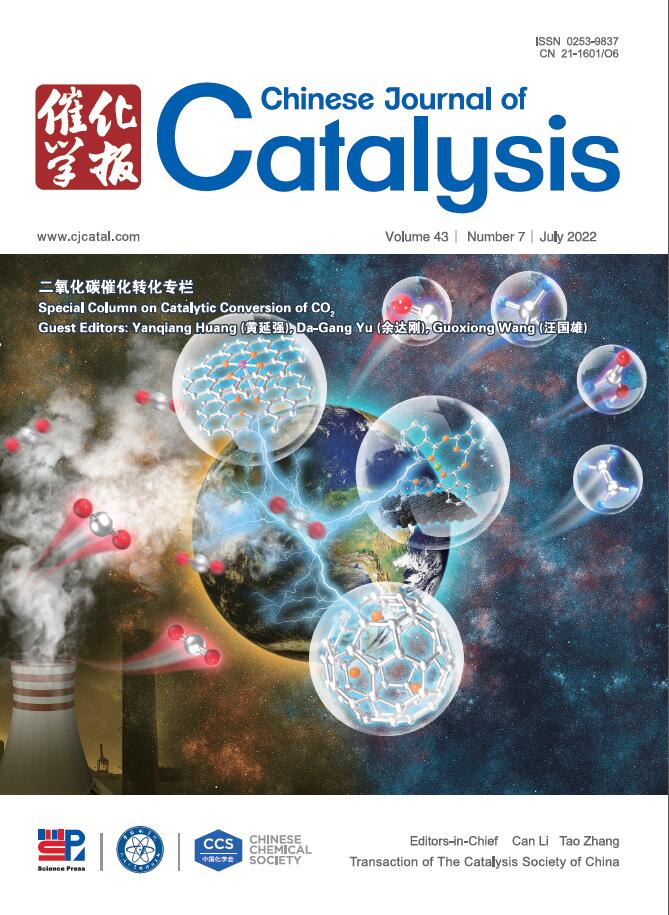Porousizing catalysts for boosting CO2 electroreducation
IF 15.7
1区 化学
Q1 CHEMISTRY, APPLIED
引用次数: 0
Abstract
Facing soaring global energy demand and intensifying environmental problems, the search for sustainable energy alternatives has become imperative. The efficient conversion of carbon dioxide (CO2), one of the primary greenhouse gases, plays the crucial role in mitigating global climate change. The electrocatalytic CO2 reduction reaction (eCO2RR) provides an effective solution for its conversion into high-value-added chemicals, promoting the development of the carbon cycle and green chemistry. Porous materials of distinctive physicochemical properties have demonstrated substantial potential in eCO2RR. In this review, various strategies of porousizing catalysts for boosted eCO2RR are briefly summarized. Subsequently, the functionalities of porous materials including enrichment effect, modulating microenvironmental pH, stabilizing key species, facilitating mass transfer and tuning the nature of active sites to improve the efficiency and selectivity of eCO2RR are categorized. Furthermore, we discuss the principal challenges confronting current electrocatalytic systems and propose future research directions. Insights from this review are expected to benefit broad communities of chemical and material research for rationalizing porous electrocatalysts and optimizing eCO2RR performances.
求助全文
约1分钟内获得全文
求助全文
来源期刊

Chinese Journal of Catalysis
工程技术-工程:化工
CiteScore
25.80
自引率
10.30%
发文量
235
审稿时长
1.2 months
期刊介绍:
The journal covers a broad scope, encompassing new trends in catalysis for applications in energy production, environmental protection, and the preparation of materials, petroleum chemicals, and fine chemicals. It explores the scientific foundation for preparing and activating catalysts of commercial interest, emphasizing representative models.The focus includes spectroscopic methods for structural characterization, especially in situ techniques, as well as new theoretical methods with practical impact in catalysis and catalytic reactions.The journal delves into the relationship between homogeneous and heterogeneous catalysis and includes theoretical studies on the structure and reactivity of catalysts.Additionally, contributions on photocatalysis, biocatalysis, surface science, and catalysis-related chemical kinetics are welcomed.
 求助内容:
求助内容: 应助结果提醒方式:
应助结果提醒方式:


